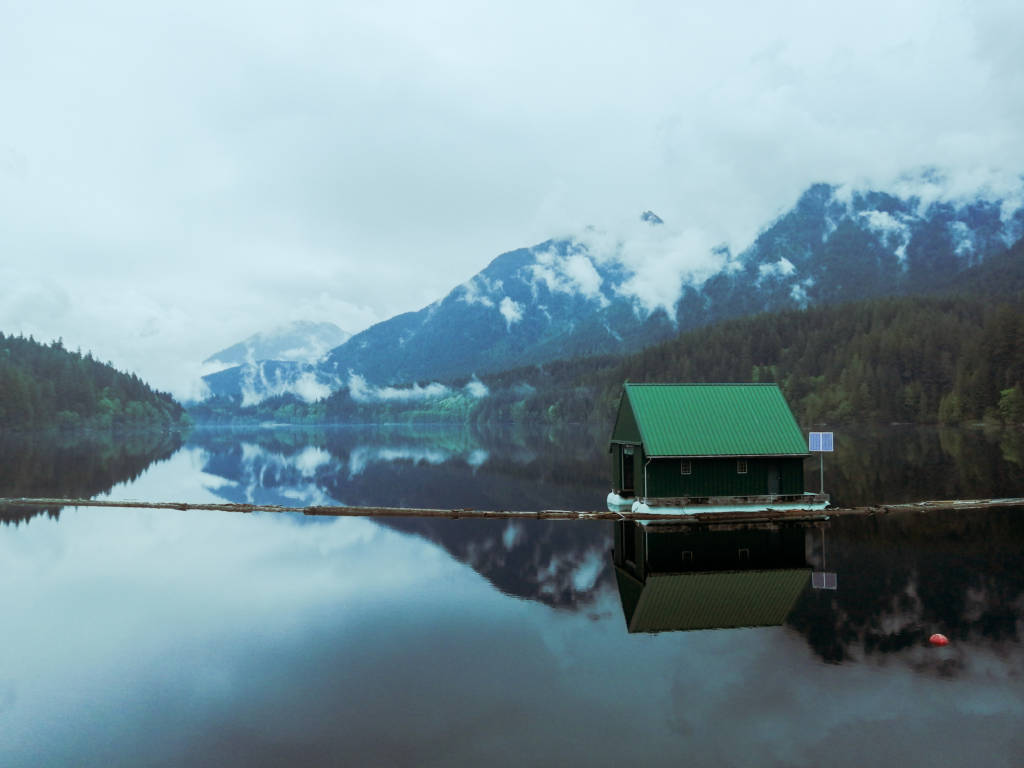‘Tis the season for hot drinks, warm layers, and pretending you are on the set of Gilmore Girls where the idyllic New England fall seems to last all year.
I love to hike in the fall. There are new colors everywhere, the air is a bit cooler so you don’t get overheated, and the trails are usually a bit quieter. In Vancouver, early fall always seems to be fairly dry as well, making walking outside usually a rain-free excursion.
Keep in mind that colors will change earlier in the year in the alpine, and snow will start falling in October. Closer to sea level, the trees will change color in October and November. In higher elevations, be prepared with warm layers and microspikes just in case.
The Best Places to Find Fall Colors Near Vancouver
Table of Contents
Fall Foliage Hikes in Metro Vancouver
1. Stanley Park, Vancouver
Distance: Up to 9.5km | Elevation Gain: Minimal | Difficulty: Easy/Moderate

This classic walk, though not a hike, has to be included on the list. The trees at Stanley Park become luminous with color in October and November and can’t be missed. Though this walk is all paved, it is still long and will definitely get your workout in for the day.
2. Maplewood Flats, North Vancouver
Distance: 4km | Elevation Gain: Minimal | Difficulty: Easy
This small reserve is largely used by birdwatchers but is also a great place for a forest stroll on its flat easy trails. Most of the trees are younger trees and shrubs that are deciduous so the fall colors really shine here.
Don’t expect a tough workout, but a beautiful fall walk in the woods goes a long way.
3. Pacific Spirit Park, Vancouver
Distance: 2.5 to 10km | Elevation Gain: Minimal | Difficulty: Easy
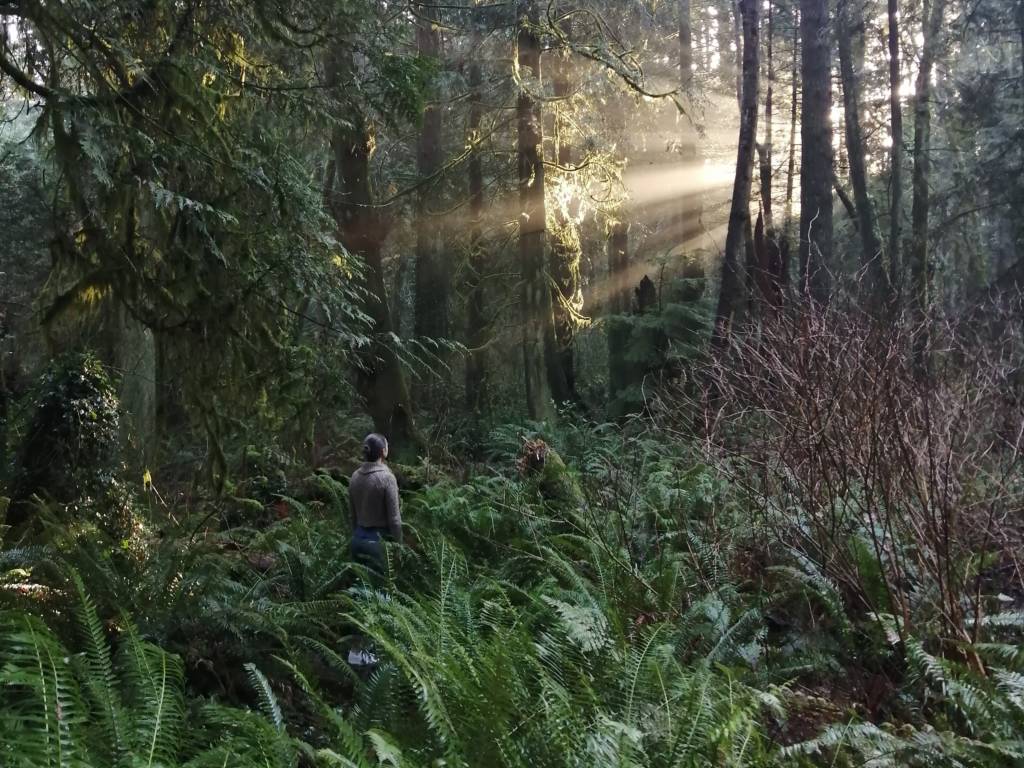
This park near UBC has a plethora of different trails, allowing you to make your walk as long or short as you would like. There are lots of giant evergreens here, but plenty of deciduous trees as well that will turn colors and line the trails with their leaves.
4. Lighthouse Park, West Vancouver
Distance: Up to 6km | Elevation Gain: Up to 200m | Difficulty: Easy
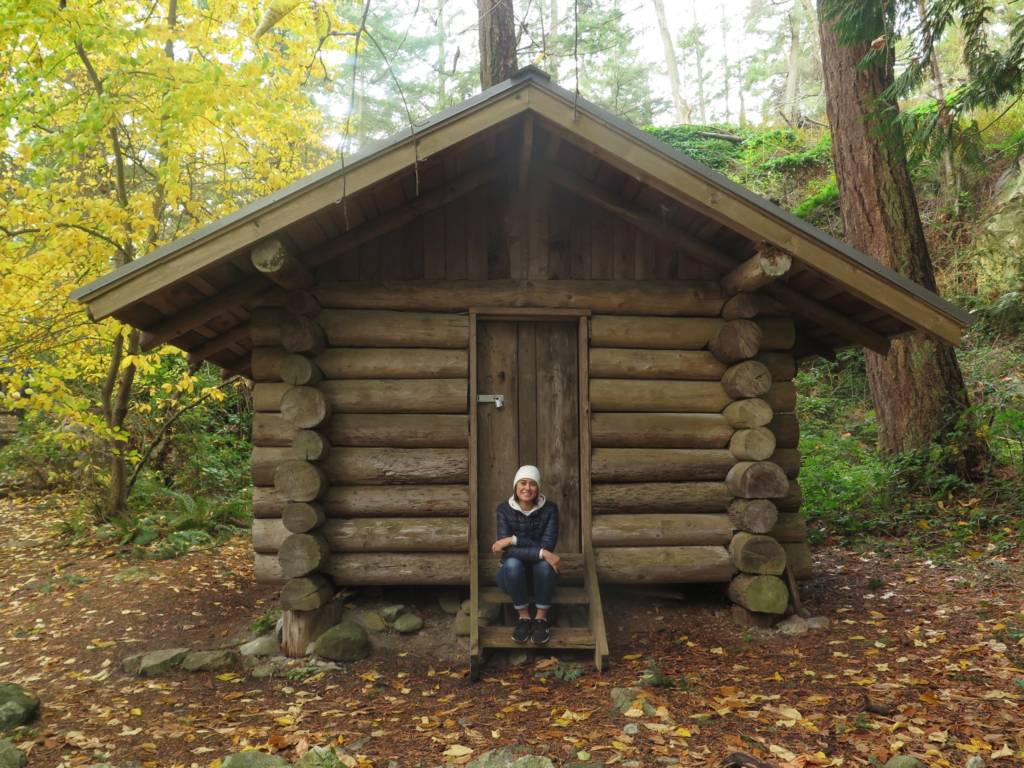
This park is mostly filled with evergreen trees, but there are a smattering of deciduous trees near the lighthouse and the cabins which are beautiful and idyllic in the fall.
The lighthouse area can be reached quickly by walking the wide path directly from the parking lot towards the ocean. It is an easy and short walk but you can make the trip longer by exploring some of the other trails and doing a large loop around the entire park.
Note that it is usually muddy in the winter and there are lots of intersecting trails so be sure to have a map of the area ready if you need it. Read more about my favorite trail here.
5. Deer Lake, Burnaby
Distance: 5km | Elevation Gain: Minimal | Difficulty: Easy
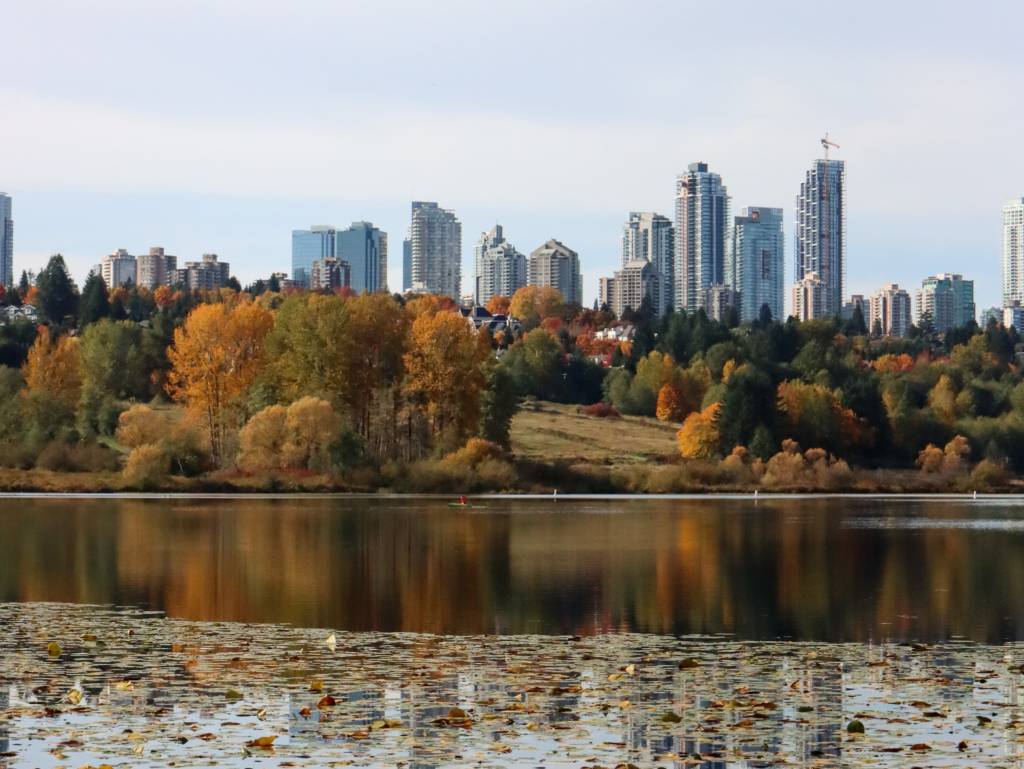
This is an easy walk around a city lake. The fall foliage is beautiful, and you don’t have to walk around the whole lake to see the leaves, you can just park and look from the beach if you like, but the walk around the lake is lovely on a sunny fall day.
6. Buntzen Lake, Port Moody
Distance: 10.5km | Elevation Gain: Minimal | Difficulty: Easy/Moderate

Buntzen Lake has lots of evergreen trees but also plenty of deciduous trees sprinkled throughout the forest making a beautiful contrast on the trail. Stop and take in the lake and the surrounding trees whenever you find a viewpoint.
This trail is nice and easy, but long, so it will take you a fair amount of time, allowing you to get some exercise while taking in the views.
Another perk of going to Buntzen Lake in the fall is that it can be quiet which is a nice change from the chaos that ensues every summer.
7. Whyte Lake, West Vancouver
Distance: 5km | Elevation Gain: 200m | Difficulty: Easy/Moderate

Whyte Lake is known for its lush green forest filled with dripping moss and ferns, but the trees around the edge of the lake at your final destination are deciduous and turn orange in the fall, making the small dock on the lake an idyllic spot to stop for a picnic or a coffee. The trail is fairly easy and can be done all year so you don’t have to worry about snow.
8. Burnaby Mountain, Burnaby
Distance: 3 to 10km | Elevation Gain: 250 to 500m | Difficulty: Moderate
The trails on Burnaby Mountain often get overlooked but there are many different ones that lead you to an excellent view overlooking the city. One popular trail is the velodrome trail, also known as the Burnaby Grind, as there are lots of stairs to conquer. You will find beautiful leaves here in October and November.
9. High Knoll/Minnekhada Park, Coquitlam
Distance: Up to 7km | Elevation Gain: Up to 300m | Difficulty: Easy/Moderate
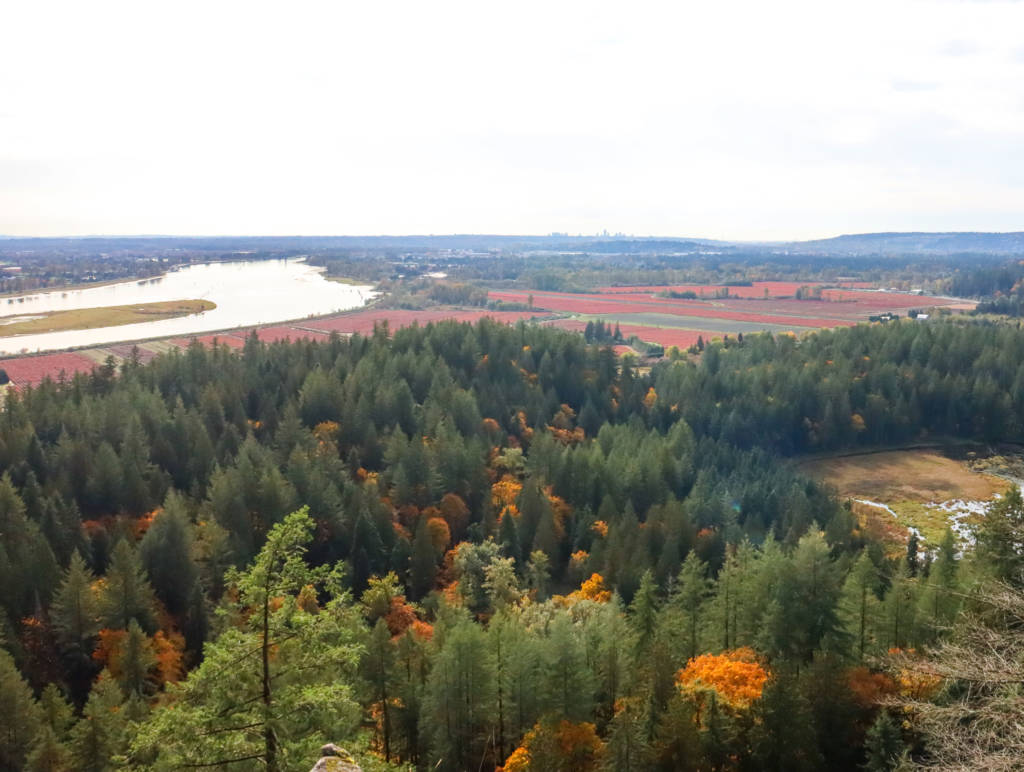
There are many different trails in Minnekhada Park to explore but the best view is at High Knoll. The loop is largely flat with some steep parts to get to viewpoints and the trail can be hiked snow-free year-round. The trees here turn beautiful colors in the fall and this makes for an excellent brisk stroll on a nice day.
Be aware that the parking lots can fill up quickly on a sunny weekend so be sure to arrive early.
10. Hollyburn Peak, West Vancouver
Distance: 8.8km | Elevation Gain: 450m | Difficulty: Moderate
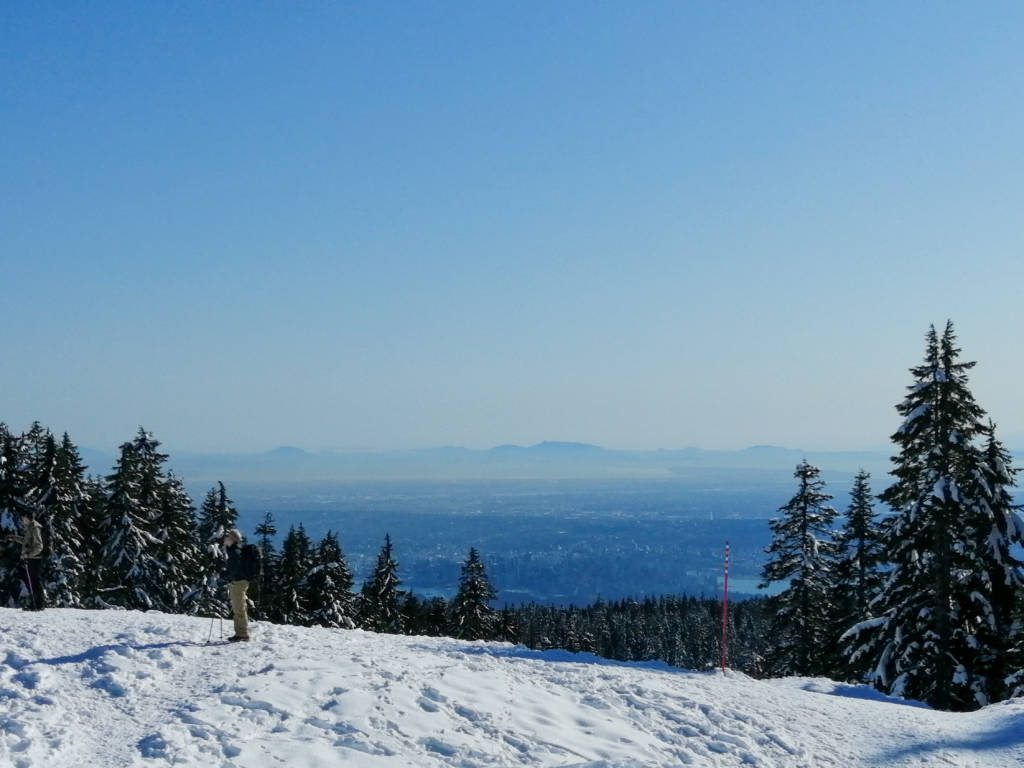
This is a great hike at Cypress Mountain (the trailhead is near the nordic skiing area). The trail starts out gaining elevation gradually and then gets steeper as you get closer to the top.
Along the way, you will see deciduous and evergreen trees, with intermingling colors as the seasons change. At the top, you will get big views of the surrounding mountains, the city, and the ocean.
11. Mount Strachan, West Vancouver
Distance: 7.5km | Elevation Gain: 600m | Difficulty: Challenging
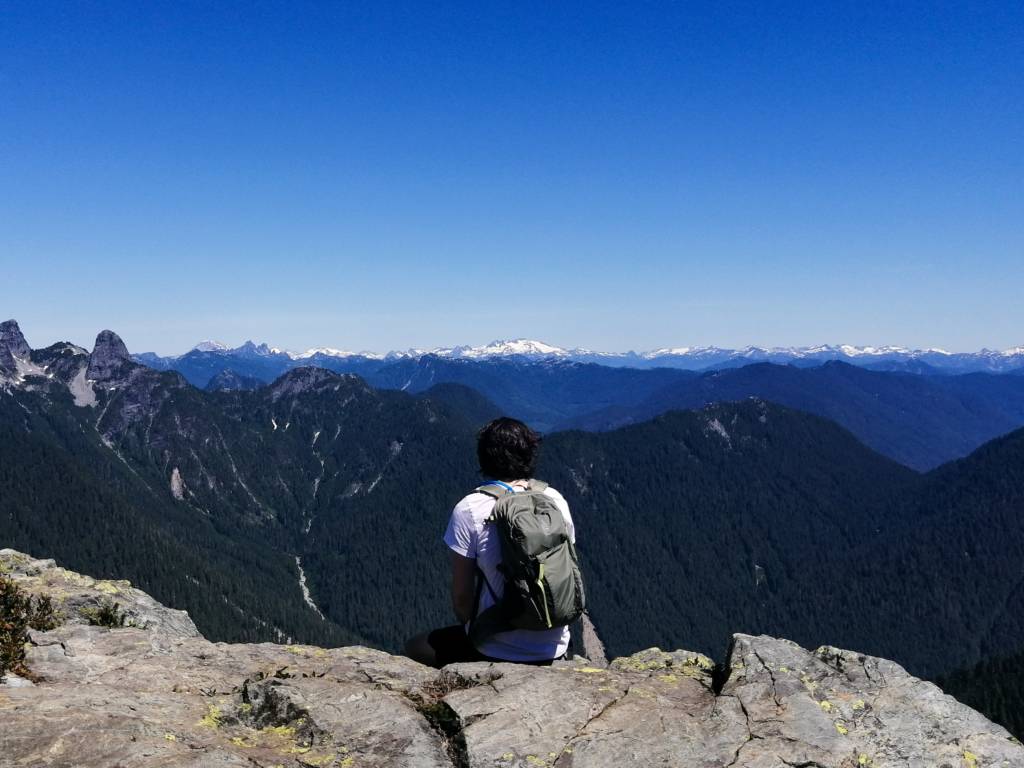
This is one of my favorite hikes on the north shore. It is a real leg burner and I would recommend heading up the Collins ski run at Cypress Mountain Ski Resort instead of taking the Baden Powell trail. Keep an eye out for the actual trail to show up on the right side of the ski run where you can switch to the proper trail and keep climbing up until you reach a false summit (if you are tired, it is beautiful here and a worthy place to end your hike if you so desire).
From here you will head downhill into a small gully then back up to the final summit where you will get outstanding 360 mountain views. In the autumn you will find fall foliage dotting the sides of the trail.
Be sure to get up and do this trail before the snow starts falling in October or November.
Fall Foliage Hikes in Squamish
12. Cheakamus Canyon
Distance: 11km | Elevation Gain: 350m | Difficulty: Easy/Moderate
This is a hike on the easier side but takes you through some beautiful forest that will turn orange and yellow in the fall. There is minimal snow here so you can hike this trial into November and still be able to see the colors without the worry of bringing extensive snow gear.
You will also find a lake along the way and views of the mountains near the end of the trail (which is unfortunately near the highway). Ignore the highway and enjoy the beauty around you.
13. Brohm Lake Interpretive Forest
Distance: Up to 8.5km | Elevation Gain: Up to 400m | Difficulty: Easy/Moderate
There are multiple trails in this park so you can choose to make this walk as long or short as you would like, you will go past a lake, through the forest, and to some mountain views as well. You can see beautiful fall colors on your walk in the fall and you can see Cheakamus Canyon from above, which also has deciduous trees that turn colors.
This area is accessible year-round so you shouldn’t have to worry about any early season snow. To get to the viewpoint expect a steep climb, but other than that, it is mostly casual hills you will have to conquer.
Download a map before you go as the trail can be confusing in places. This can be a busy spot on a nice weekend so arrive early for a parking spot (if you can’t find a spot, you can park at Cat Lake which is a 15-minute walk away).
14. Elfin Lakes
Distance: 20km | Elevation Gain: 850m | Difficulty: Moderate

The first half of this hike is on a nice gradual slope through the forest where you will find some smatterings of golden shrubs. After the first 5km, the trail opens up onto a ridge where you will find mountain views, more fall colors, and eventually a series of small lakes where your hike will end.
Though this hike is long it is overall not too challenging, you just need to have some endurance to complete it. At the summit take in the mountain views and explore the campsite, warming hut, and sleeping shelter.
It can be tricky to get this hike at just the right time for fall foliage as it can start snowing as early as October, check recent trail and weather reports before you go for best results. You can snowshoe here as well if you are keen on a winter excursion.
The trailhead is at Rubble Creek, which is at the end of a long forest service road so take your time and be sure to carry chains as it gets closer to winter, they can be required at times.
15. Garibaldi Lake
Distance: 18.5km | Elevation Gain: 1000m | Difficulty: Moderate/Challenging

Garibaldi Lake is a stunning blue glacial lake surrounded by mountains, and in September and early October, you can see the flora around the lake turn to orange and red. The hike to get to the lake consists of a series of switchbacks through the forest and eventually breaks out into the open with views of the lake and surrounding mountains.
This hike is frequently done in two days by camping at the lake and then continuing to do either Panorama Ridge or Black Tusk (both add about 12km and 600m of elevation gain to the stats listed above). It is possible to do one of these peaks in a single day but you need to be fully prepared with food, water, training, and the entire day to walk.
You will find a warming hut, tent pads, a pit toilet, and bear hangs for food at the campsite.
Fall Foliage Hikes in the Fraser Valley and Manning Park
16. Lindeman Lake, Chilliwack
Distance: 3.5km | Elevation Gain: 250m | Difficulty: Easy/Moderate
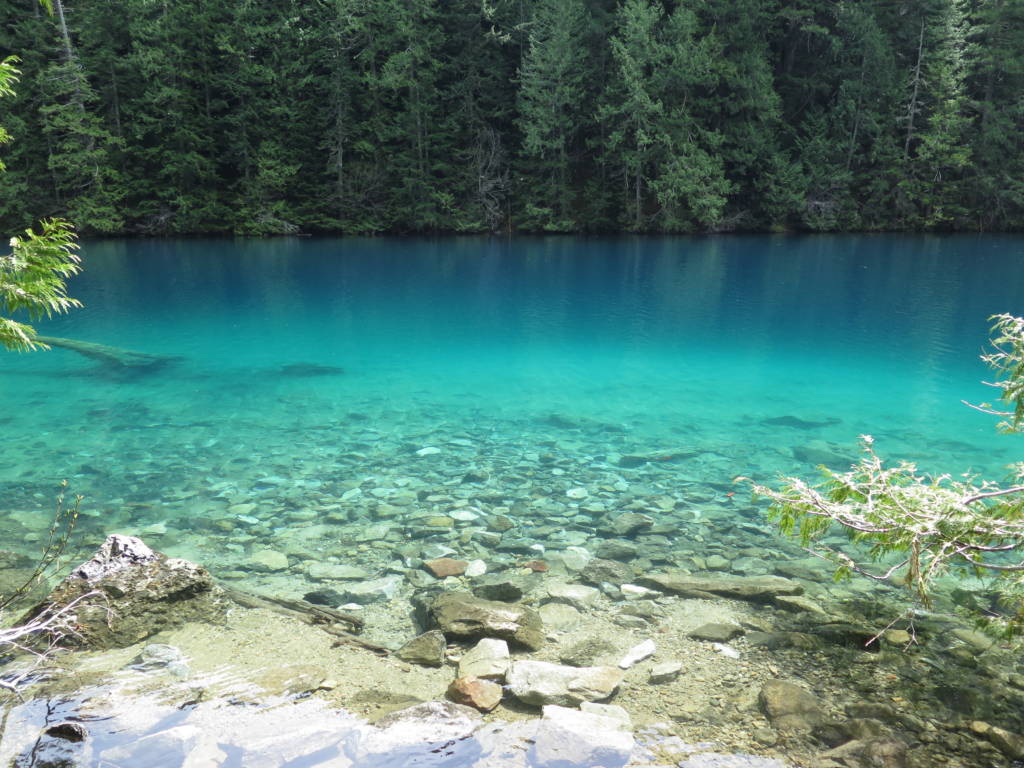
The area around Lindeman Lake is largely rocky with big evergreen trees but the brush low to the ground changes into beautiful orange and red colors when fall rolls around.
This hike is short but steep, so though it is a bit tiring, it is over very quickly and you will arrive at the stunning clear blue lake in no time. I would recommend continuing to walk to the other end of the lake to take it all in, or even continuing to Greendrop Lake if there hasn’t been snow yet for a little extra exercise.
The hike to Lindeman Lake can usually be done snow-free year-round, but I wouldn’t recommend going in the rain because the trail is very rocky and slippery when wet.
17. Elk Mountain, Chilliwack
Distance: 8.5km | Elevation Gain: 750m | Difficulty: Challenging

This hike takes you uphill, steadily getting steeper as you get further along the trail the entire way until you pop out onto a ridge and where you can take in the big mountain views, including those of Mount Baker. On the ridge, you will find lots of low shrubs that turn the colors of autumn when September and October roll around.
There will be snow on Elk Mountain in the winter, which will likely start accumulating at the end of October, though the first snowfall changes every year. Keep an eye on the forecast and check out this beauty on a sunny day. If you miss the fall season it also is a great snowshoe trail.
Be aware that the parking lot is small and will fill up quickly on a nice weekend.
18. Williamson Lake, Chilliwack
Distance: 4km+ | Elevation Gain: 550m+ | Difficulty: Challenging
This short but steep hike will lead you to waterfalls and a lake that are great to relax at and take a dip in the summer. In the fall you can see the foliage change here to warmer colors and you can soak it all in during September and October before the snow falls.
Note that this trailhead is at the end of a very rough road and requires a 4WD vehicle. Otherwise, you may have to park further down the road and make your hike longer.
19. Cheam and/or Lady Peak, Chilliwack
Distance: 7 or 8.5km | Elevation Gain: 650 or 750m | Difficulty: Challenging
Mount Cheam and Lady Peak start on the same trail and then diverge at about the halfway point. Cheam is a longer hike with less elevation gain, making it the slightly easier option; whereas, Lady Peak is steeper and more technical. Both have stunning views of the Fraser Valley, Mount Baker, and the surrounding mountains.
In the height of summer, you will find beautiful wildflowers here but then the landscape starts to turn to orange, yellow, and red as fall sets in. Be sure to get here before the snow falls because the road to the trailhead is barely passable in a 4WD car in the summertime and will be impassible in the winter.
20. Heather Trail/Three Brothers, E. C. Manning Park
Distance: 20.5km | Elevation Gain: 850m | Difficulty: Moderate
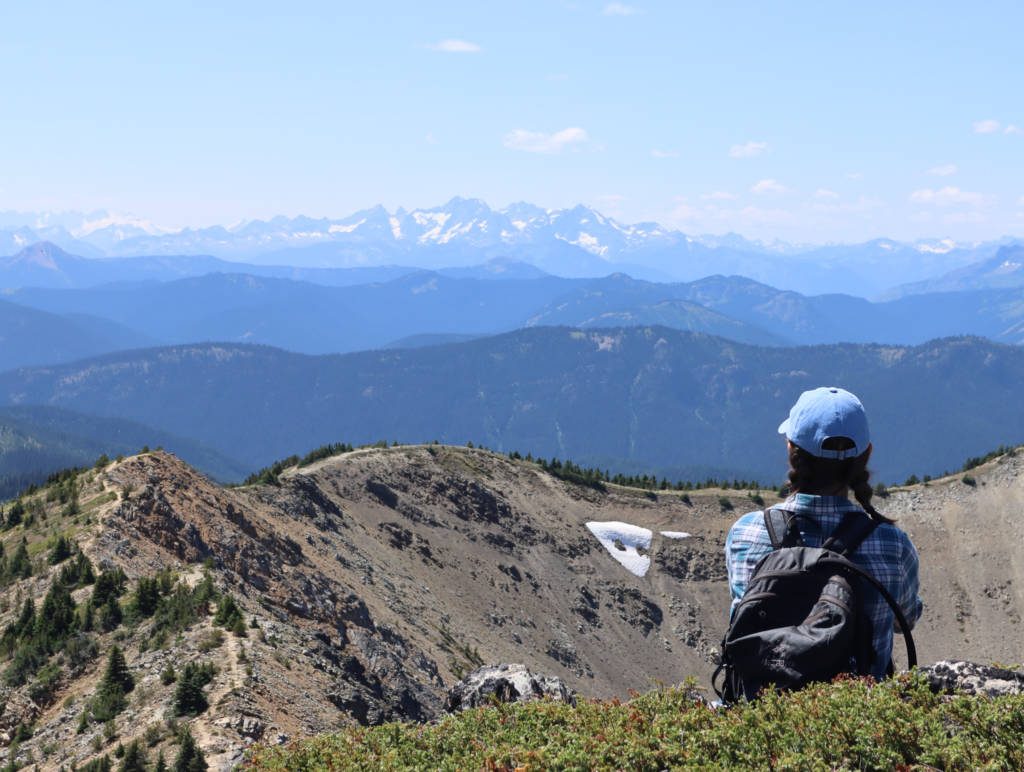
This trail starts after driving high up into the mountains so the trail is long but overall fairly moderate because there is not too much challenging uphill to conquer. The hardest part about the hike is that you will have an uphill climb at the very end as you are just about to get to your car when you are tired and ready to relax your legs.
You will find beautiful views of the surrounding mountains throughout the hike, wildflowers in the summer, and lots of beautiful fall colors in September and October. It is possible to extend this trail into a multi-day trip and conquer several of the nearby peaks as well if you are looking for a longer trip.
21. Frosty Mountain, E. C. Manning Park
Distance: 21 to 27km | Elevation Gain: 1200 to 1700m | Difficulty: Challenging

This is a very exciting hike that has its own larger section below because this is the hike closest to Vancouver where you can see golden larches! Seeing larches is a rare experience to have and if you are able to make it to Frosty Mountain at the end of September or early October I would highly recommend it.
This hike will be a tough full-day or two-day hike (which can be done as an out and back or a loop) so be sure to go very well prepared with plenty of food, water, and warm layers (there can sometimes already be snow) and read more about it below in the “Where to Find Golden Larches Near Vancouver” section.
Where to Find Golden Larches Near Vancouver
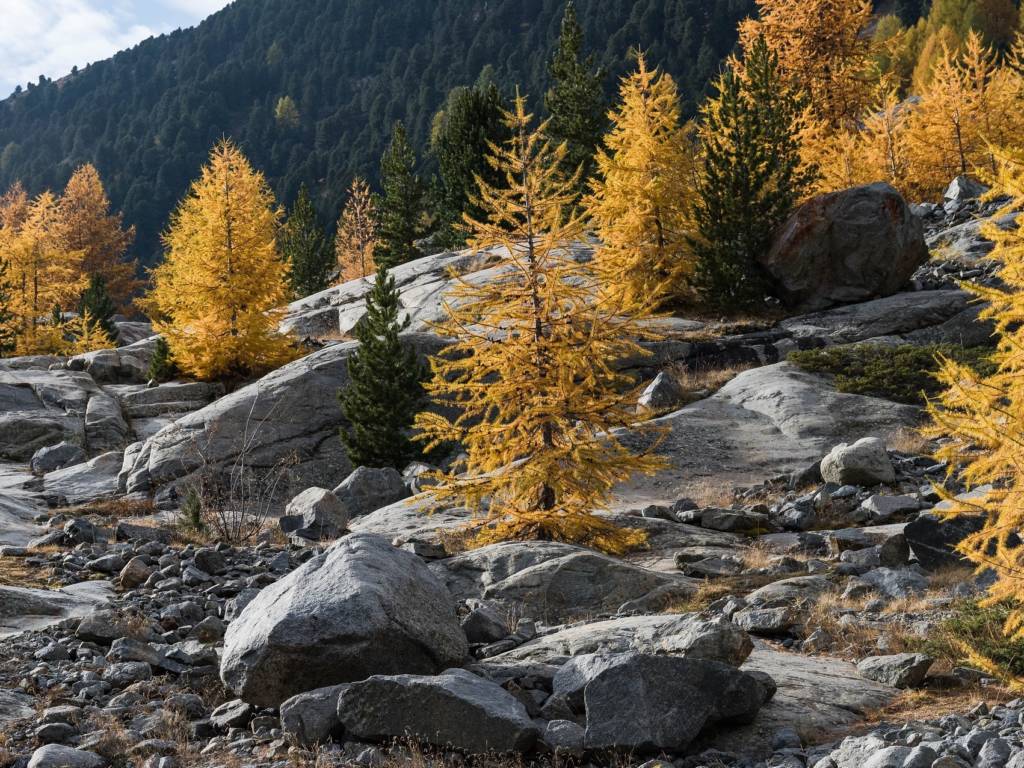
Mount Frosty, Manning Park
Distance: 21 to 27km | Elevation Gain: 1200 to 1700m | Difficulty: Challenging
Though I have listed this hike above, golden larches derve their own special section. Larches are a unique type of alpine fir trees that are deciduous, which means that they lose their needles in the winter. In the fall the needles turn an incredible yellow color. They are rare because they require a very specific environment in which to grow. I hope every hiker is lucky enough to be able to experience golden larches at least once.
These trees only grow in very specific places and the only place you can see them in BC near Vancouver is in Manning Park (3 hours east of Vancouver), specifically on the Mount Frosty Trail. You can also find them on some select trails in the North Cascades. These trees are only golden for a short period so for your best chance to see them in all their glory be sure to hike here between late September and early October.
The Mount Frosty hike is very challenging and will take all day or two days. There are actually two ways to do this hike, you can do it as a loop that is longer and goes near Windy Joe Mountain, or you can do an out and back trail from Lighting Lakes to the peak.
Remember that the days are shorter in the fall so be sure to get started as early as possible and bring headlamps or flashlights, the 10 essentials, lots of layers, microspikes, and be sure to notify someone of your location.
If you end up searching out the larches you will be in awe of their beauty and you will have stunning mountain views from the top of Mount Frosty to enjoy too. A definitely bucket list item for all my fellow hikers out there.

Welcome to Alpine Feeling! My name is Talon, and I am a Vancouver local who loves hiking and all things outdoors. I am here to do my best to provide you with outdoor guides to the Vancouver area and beyond.
